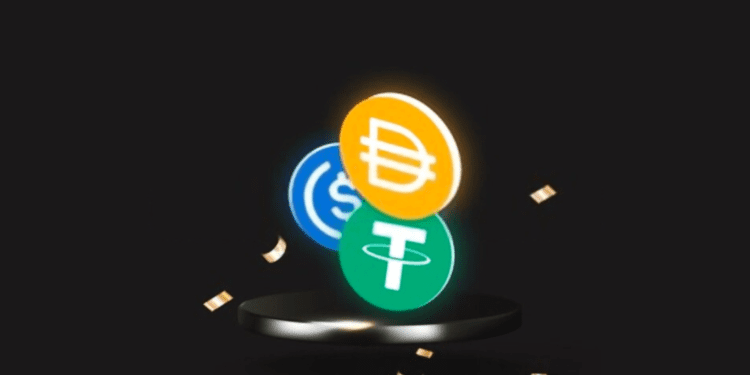The decline in stablecoin market capitalization is driven by traditional finance rates surpassing crypto-native yields, leading to a persistent sell-off of stablecoins.
- Stablecoin market capitalization has declined by 35% in the past 18 months, primarily due to stronger U.S. treasury yields and reduced retail participation.
- The stablecoin market is highly concentrated, with a few assets, notably USDT and USDC, dominating the sector despite recent depegging concerns.
- Stablecoins are crucial to the crypto industry and their comeback relies on renewed interest, favorable rates, and crypto-friendly regulations.
The stablecoin market has weathered a challenging period over the past eighteen months, plagued by stronger treasury yields and mounting regulatory pressures in the United States. Despite this sustained decline in market capitalization, the stablecoin sector has not succumbed to its challenges entirely.
The Decline
The decline in stablecoin market capitalization commenced after the collapse of Terraform and its native stablecoin, UST, which dealt a significant blow to the entire sector. According to data from DeFiLlama, the market cap reached its zenith at $189 billion in May of the previous year, only to dwindle to $124 billion at the time of writing, marking an enduring 35% drop.
Vaidya Pallasena, the co-founder of Bluechip, a nonprofit organization specializing in the evaluation of stablecoin safety, points to multiple factors contributing to this downward spiral. He observes that retail participation has significantly waned compared to its peak in mid-2021, with daily trade volumes plummeting from $150-300 billion to an average of $50 billion.
Pallasena attributes the decline to the surge in U.S. treasury yields since mid-2022, coupled with a lack of significant volatility in the crypto market. Moreover, the opportunity cost of holding stablecoins when risk-free yields hover around 5% has further exacerbated the situation.
Traditional Finance Rates vs. Crypto-Native Yields
Nic Carter, a partner at Castle Island Ventures, identifies the primary catalyst for the market’s decline as the crossover point where traditional finance rates outpace crypto-native yields. He asserts, “It’s really just traditional finance rates exceeding crypto-native yields.” This shift occurred in 2022, leading to a sell-off of stablecoins back into fiat.
Carter suggests that the stablecoin selloff will continue until either traditional finance rates decrease, particularly three-month treasuries, or crypto yields experience an upturn through DeFi or Ethereum staking.
Market Concentration
The stablecoin market is highly concentrated, with five assets making up over 95% of the total market capitalization. Despite recent concerns, USDT remains the most dominant, boasting an $83 billion market capitalization and accounting for 67% of all transaction volume. In contrast, USDC has experienced a decline to multi-year lows, despite Circle’s expansion efforts.
USDT vs. USDC Disparity
The disparity between USDT and USDC can be attributed to what Nic Carter calls on-shore and off-shore stablecoins. U.S. regulators’ stringent stance and their efforts to suppress the stablecoin market have caused the market share of U.S.-native stablecoins, such as USDC, to plummet. Carter emphasizes that stablecoins, constituting only 10% of the total crypto market share, nevertheless account for 70-80% of all settlement activity on public blockchains, underscoring their importance and product-market fit even in a bear market.
The Future Outlook
The current scenario presents a paradox. The decline in the stablecoin market is a significant concern, but the importance of stablecoins in the crypto industry remains undiminished, signifying a product-market fit even in challenging times.
Pallasena believes that the trend could reverse when the inverse of the factors that led to the decline occurs. He anticipates that renewed interest in crypto trading and investment, coupled with steady interest rate cuts, could be pivotal in restoring the stablecoin market to its former glory. Additionally, a regulatory environment more favorable to cryptocurrencies could play a vital role in revitalizing the sector.
Conclusion
The stablecoin market has faced an 18-month decline due to various factors, including rising U.S. treasury yields and regulatory pressures. Despite this decline, the sector’s resilience and importance in the crypto industry remain evident. While challenges persist, a potential revival may hinge on a combination of renewed interest in crypto, favorable interest rate conditions, and a more pro-crypto regulatory environment. The future of stablecoins is still uncertain, but not all hope is lost.














